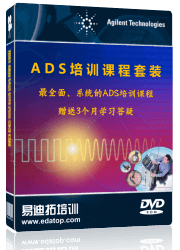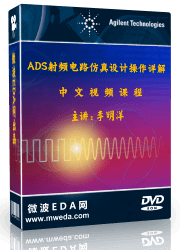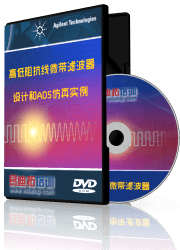- 易迪拓培训,专注于微波、射频、天线设计工程师的培养
ADS coupled line design with LineCalc
I am trying to design coupled line couplers in ADS at 80 GHz. Initially i use the ideal coupled lines to check the performance and all is ok. Then i use a MSUB and i size the lines using the ADS linecalc. Initially i use a conductor of zero thickness and infinite conductivity and i get similar performance between the ideal coupler and the coupler on the actual substrate. Then i give the metal thickness and i set the conductivity to the actual value. I calculate the new dimensions of the coupler, but then the behavior is not the specified one for frequencies above 10 GHz. I know there are effects that affect the current flow of metals at high frequencies. Is the deviation due to inaccurate modelling of the lines in the linecalc tool or am i doing anything wrong?
Thank you in advance.
Can you be more specific? PCB or MMIC? What is your substrate? What line width and metal thickness? What behaviour is "not the specified one", and how did you check/calculate that?
Oh yes sorry. I am making an MMIC, my metal thickness is 3um. Substrate is a stack of silicon dioxide/nitride with er~4 and height of 5.9um (from my metal to M2 which is the return path for the microstrip). Specified behavior is the behavior of the coupled made with the ideal coupled lines in ADS.
Thanks George! Yes, that metal thickness will impact the results. You need to include thickness in design (in linecalc) and simulation (Momentum substrate definition). One challenge when using linecalc is the dielectric stackup. I assume you used Microstrip (air above), whereas MMIC/RFIC technologies often have dielectrics/passivation above the top metal. Apart from that, linecalc should be fine, and there is no inherent frequency limit.
Speaking about coupler simulations in Momentum, make sure you have enabled edge mesh (off by default). This ensures that the mesh near the gap is dense enough, and the coupling between conductors is accurate.
申明:网友回复良莠不齐,仅供参考。如需专业帮助,请学习易迪拓培训专家讲授的ADS视频培训课程。
上一篇:Stability circles for multiple frequencies on a single chart in ADS
下一篇:port-to-port isolation equation in ADS
ADS濞戞搩鍘介弸鍐喆閸℃侗鏆ラ柛鈺冾攰椤斿嫰寮▎鎴旀煠 | More...
 国内最全面、最专业的Agilent ADS培训课程,可以帮助您从零开始,全面系统学习ADS设计应用【More..】
国内最全面、最专业的Agilent ADS培训课程,可以帮助您从零开始,全面系统学习ADS设计应用【More..】
- Agilent ADS教学培训课程套装
- 两周学会ADS2011、ADS2013视频教程
- ADS2012、ADS2013射频电路设计详解
- ADS高低阻抗线微带滤波器设计培训教程
- ADS混频器仿真分析实例视频培训课程
- ADS Momentum电磁仿真设计视频课程
- ADS射频电路与通信系统设计高级培训
- ADS Layout和电磁仿真设计培训视频
- ADS Workspace and Simulators Training Course
- ADS Circuit Simulation Training Course
- ADS Layout and EM Simulation Training Course
- Agilent ADS 内部原版培训教材合集








